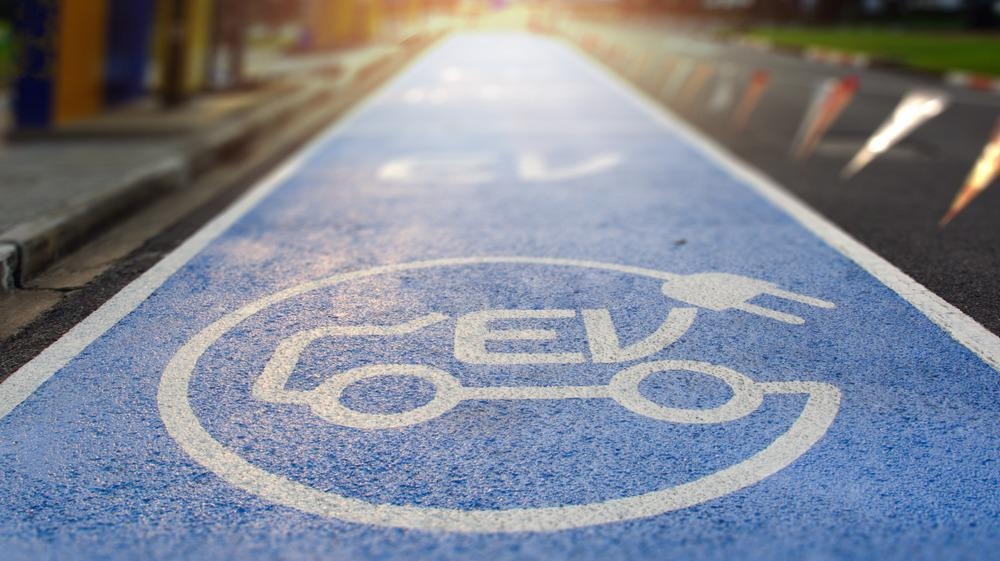
Image Credit: Eakasit/Shutterstock.com
In the middle of the 1990s, the first significant use of nickel-metal hydride (NiMH) batteries in vehicles such as the Toyota Prius was introduced. The first commercial applications for Li-ion batteries emerged around the same time. Applications included camcorders and eventually smartphones, laptops, and numerous other portable devices. The electric vehicle revolution is currently powered significantly by nickel (Ni) in lithium-ion (Li-ion) batteries. This article will look at the current and future use of high nickel in electric vehicle batteries.
Pros and Cons of High-Nickel Batteries
Lithium-ion batteries initially consisted of cathodes made from lithium cobalt oxide (LiCoO2) and anodes made from graphite. The cobalt in these materials was replaced by other metals such as manganese (Mn), Ni, and aluminum (Al). This was how the NMC [Li(Ni, Mn, Co)O2] and NCA [Li(Ni, Co, Al)O2] cathodes used in electric vehicles today were developed. Mn and Al remain inactive and act as stabilizing agents. Their presence in the cathode material increases the safety properties and the number of charge/discharge cycles a battery can achieve.
With increased Ni content, the amount of Li that could be cycled in and out of the cathode without causing structural instability increases, and the energy density rises as a result. Using nickel-rich cathodes also eliminates the need for cobalt.
The price of cobalt has varied significantly in recent years, and its sustainability is questionable. However, Ni has a geographical advantage, with wide distribution and production in larger quantities. Most state-of-the-art commercial cathodes these days contain up to 80% Ni.
Ni-rich cathodes face challenges in cycling stability and thermal stability. Based on ambient storage conditions, the high-surface reactivity of Ni-rich cathodes leads to the generation of surface impurity species with CO2 and H2O. These phenomena cause problems during electrode ink preparation, cell storage, and cycling.
Research on High-Ni (Nickel) Batteries
Researchers from the Warwick Manufacturing Group (WMG) at the University of Warwick have discovered that dry ambient conditions for storage and processing of cathodes result in significant improvement in High-Ni battery performance.
With respect to reduced cobalt content, the industry's incremental progression for NMC and NCA battery production is as follows: the NMC-532→NMC-622→NMC-721→NMC-811, where NMC-811 has the least amount of Co (10%) with respect to the highest amount of Ni (80%).
The three processes distinguished by the researchers for NMC-811 to produce surface carbonates and hydroxides are as follows:
- Residual impurities that result from precursors that do not react during synthesis
- Higher percentage of carbonates/hydroxides present on the surface in equilibrium (they stabilizing the surface of Ni-rich materials post-synthesis)
- Impurities that form during ambient storage time
Researchers first exposed the NMC-811 cathode to different temperatures and humidities. For each case, the material's performance and degradation in a battery over 28 days were measured and analyzed.
A combination of physical, chemical, and electrochemical testing was used for this analysis. High-resolution microscopy (scanning electron microscopy (SEM) and secondary ion mass spectrometry (SIMS)) was used to identify the morphological and chemical changes occurring at the micron and sub-micron scale during charging and discharging of the batteries.
They also found that in all ambient conditions, inferior samples displayed specific capacity and cycling performance, compared to the control samples prepared to avoid contact with moisture at each step. However, the as-exposed sample showed a reaction between H2O and CO2 with the Li+ ions in the battery cell after 28 days of ambient moisture exposure, resulting in lithium carbonate and hydroxide formation species.
The formation of carbonates and oxides on the surface of the NMC-811 cathode leads to a loss of electrochemical performance during material aging. This happens because of the inferior ionic, electronic conductivity caused due to hindrance induction of Li-ion diffusion during the lithiation/de-lithiation process.
Battery capacity also decreases due to the active particles' electrical isolation, disruption of the conductive particle network, and exposure of new surfaces that could cause side reactions due to the propagation of inter-granular cracks and oxidation state changes.
Analysis carried out with high-resolution microscopy led to the confirmation of the inter-granular porosity and micro-cracks on aggregate particles after 28 days of ambient exposure.
Conclusion
The researchers concluded that the driest conditions at dew points of approximately -45 oC are the most efficient for storing and processing the NMC-811 material and exhibiting the best battery performance.
They showed that minimizing contact of Ni-rich materials with ambient air is an absolute necessity to maintain structural stability during the storage process and prevent the degradation effects. This would then facilitate the large-scale industrial implementation of high-Ni materials in Li-ion batteries.
Future Work
Further work has been initiated at the WMG to verify the extent to which a shorter-term moisture exposure will affect the cycling performance of NMC-811. However, more analysis of this phenomenon and its effect on cell gassing or swelling of battery cells during extended cycling should be examined and given attention in the future.
References and Further Reading
C. Busà et al. (2021) The effects of ambient storage conditions on the structural and electrochemical properties of NMC-811 cathodes for Li-ion batteries, Electrochimica Acta 366, 137358. https://doi.org/10.1016/j.electacta.2020.137358
W. Li et al. (2020) High‐Nickel NMA: A Cobalt‐Free Alternative to NMC and NCA Cathodes for Lithium‐Ion Batteries’, Adv. Mater. 32, 2002718. https://doi.org/10.1002/adma.202002718
Nickel Institute. [Online] Nickel in batteries. Available at: https://nickelinstitute.org/about-nickel/nickel-in-batteries/
Electric and Hybrid Vehicle Technology International. [Online] The ultimate conditions to get the most out of high-nickel batteries. Available at: https://www.electrichybridvehicletechnology.com/news/materials-research/researchers-discover-how-to-optimize-high-nickel-electric-vehicle-batteries.html
Disclaimer: The views expressed here are those of the author expressed in their private capacity and do not necessarily represent the views of AZoM.com Limited T/A AZoNetwork the owner and operator of this website. This disclaimer forms part of the Terms and conditions of use of this website.